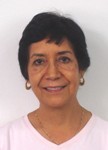Org. Synth. 2010, 87, 26
DOI: 10.15227/orgsyn.087.0026
SYNTHESIS OF SPIROBORATE ESTERS FROM 1,2-AMINOALCOHOLS, ETHYLENE GLYCOL AND TRIISOPROPYL BORATE: PREPARATION OF (S)-1-(1,3,2-DIOXABOROLAN-2-YLOXY)-3-METHYL-1,1-DIPHENYLBUTAN-2-AMINE
Submitted by Viatcheslav Stepanenko, Kun Huang, and Margarita Ortiz-Marciales
1.
1. Procedure
CAUTION: Benzene is generated during the quench of Step A. All subsequent handling should be carried out in a well-ventilated hood.
A.
(2S)-2-Amino-3-methyl-1,1-diphenyl-butan-1-ol (1).3 An oven-dried, 1-L, three-necked round-bottomed flask is fitted with rubber septa on two of the three necks and a hose adapter connected to a nitrogen line and bubbler on the third neck. A thermocouple temperature probe is inserted through one of the septa. Nitrogen is flowed through the flask while cooling to room temperature. To the flask is added via cannula, 2.0 M phenylmagnesium chloride in
THF (300 g, 288 mL, 0.576 mol, 5.0 equiv) (Notes
1,
2, and
3). The mixture is stirred using a 2.5-cm oval Teflon-coated magnetic stir bar and cooled to -2 °C using an ice/acetone bath.
L-Valine methyl ester hydrochloride (19.2 g, 114 mmol) is added portion-wise as a solid over 50 min while keeping the temperature below 5 °C. After addition, the cooling bath is removed. The solution is allowed to warm to room temperature over an hour and is stirred at room temperature for 2 h
(Note 4). The mixture is cooled to 5 °C with an ice-bath, then carefully hydrolyzed with half-saturated aqueous
NH4Cl (250 mL) (Note 5).
Ethyl acetate (150 mL) and saturated
NaCl (50 mL) are added to the flask and the mixture is stirred vigorously for 5 min, then the solids are allowed to settle. The aqueous and organic layers are decanted into a 1-L separatory funnel and the layers separated. The aqueous layer is returned to the reaction flask and extracted in a similar fashion with two 150-mL portions of EtOAc
(Note 6). The organic layers are combined, washed with saturated
NaCl (100 mL), and filtered through a bed of
Na2SO4 (50 g) followed by an
EtOAc rinse (100 mL) of the bed. The resulting clear solution is concentrated by rotary evaporation (20 mmHg, 40 °C bath) to afford a yellow solid (26.5 g), which is purified by column chromatography on silica gel
(Note 7). The product is obtained as an off-white solid (18.1 g, 62% yield), which is used without further purification in the next step (Notes
8 and
9).
B. (-)-(S)-1-(1,3,2-Dioxaborolan-2-yloxy)-3-methyl-1,1-diphenylbutan-2-amine (2). An oven-dried, 3-necked 250-mL round-bottomed flask is fitted with a short reflux condenser (10 cm) on one outer neck, a stoppered 50-mL addition funnel on the middle neck, and a rubber septum on the other outer neck. A thermocouple temperature probe is inserted through the septum. A 2.5-cm oval Teflon-coated magnetic stirrer is added to the flask. A 24/40 hose adapter is attached to the top of the reflux condenser and connected to a nitrogen line and gas bubbler. The flask is charged with toluene (60 mL) followed by triisopropyl borate (3.88 g, 4.7 mL, 20.6 mmol) and ethylene glycol (1.26 g, 20.3 mmol), each added via syringe (Note 10). The mixture is stirred and heated with a heating mantle over 20 min to 80 °C, at which time the mixture becomes homogeneous. The solution is cooled to 60 °C, then a solution of (2S)-2-amino-3-methyl-1,1-diphenyl-butanol (5.20 g, 20.4 mmol) (1) in toluene (25 mL) is added via the addition funnel over 3 min, during which time the temperature decreases to 55 °C and white crystalline product is formed. The addition funnel is rinsed with toluene (5 mL). The resulting mixture is cooled to ambient temperature over 30 min. The mixture is transferred to a 500-mL round-bottomed flask and the mixture is concentrated to dryness by rotary evaporation (20 mmHg, 50 °C bath), and then dried for 15 h at 80 °C in a vacuum oven (20 mmHg) to yield 6.56 g (99%) of spiroborate ester 2 as a white solid (Notes 11 and 12).
2. Notes
1.
Reagents and solvents used in this preparation were sourced from Sigma-Aldrich and used without further purification, including 2.0 M phenylmagnesium chloride in THF,
L-valine methyl ester hydrochloride (99%), ethyl acetate (ACS reagent grade, >99.5%), hexanes (ACS reagent grade, >98.5%),
n-heptane (anhydrous, 99%), ethylene glycol (99.8%, anhydrous), toluene (ACS reagent grade, >99.5%, dried over pelleted 4 Å molecular sieves), triisopropyl borate (>98%, Sure/Seal
TM), and silica gel (200-400 mesh, 60 Å).
2.
The 1-L flask is marked prior to oven drying at a 280-mL fill to help estimate the amount added to the flask during cannulation. The amount of Grignard reagent added is determined by weighing the bottle before and after addition.
3.
This reaction can also be carried out with 4 equiv PhMgCl. A slightly lower yield is obtained (57% vs 62%).
4.
The reaction is followed by
1H NMR as follows: a sample (0.2 mL) is quenched into saturated aqueous
NH4Cl (1 mL), extracted with CDCl
3, and the bottom organic layer is filtered through a cotton plug (to remove water) into an NMR tube. The set of 2 doublets of valine methyl ester at 0.9 ppm is diagnostic to assess complete reaction. All starting material is reacted (<1 %) after 1 h at room temperature.
5.
The initial addition of NH
4Cl is highly exothermic. The first 25 mL is added dropwise with the temperature controlled below 40 °C. Total addition time is 20 min.
6.
The solids (magnesium salts) cause poor layer separation, therefore it is important to decant the solution from the solids for improved separation.
7.
The chromatography is carried out using
silica gel (150 g) and a 5-cm diameter flash column. The column is packed using 10:1 hexanes:EtOAc and topped with 0.5 cm of sea sand. The solid product from concentration is dissolved with sonication in
CH2Cl2 (20 mL) and loaded onto the column. The product is eluted with hexane/ethyl acetate (8:1 v/v), collecting 75 mL fractions. TLC is used to monitor fraction collection, using 1:3 EtOAc:hexanes, UV and iodine visualization, with the product having an R
f of 0.3. The product tails off the column and is collected in about 1.5 L of eluent. The column is then eluted with 1:1 EtOAc:hexanes (1 L) which affords a mixture of by-products (4.3 g), which are discarded. Fractions 6-25 containing pure product by TLC are combined and concentrated by rotary evaporation at 100 mmHg and 50 °C. Due to the formation of solids during concentration, bumping occurs if a higher vacuum is used.
8.
An analytically pure sample is prepared by recrystallization from
n-heptane, as follows. The product (5.0 g) from the chromatography is added to
n-heptane (50 mL) and warmed to 80 °C to dissolve the solids. The mixture is slowly cooled to ambient temperature over 1 h and held at ambient temperature for 2 h. The resulting solids are filtered and washed with
n-heptane (10 mL) to afford 4.45 g (89%) of product.
9.
(-)-(2S)-2-Amino-3-methyl-1,1-diphenyl-butan-1-ol (1): mp 98-99 °C, Lit
3a 94-95 °C; [α]
20D -126 (
c 2, CHCl
3), Lit
3a [α]
25D -127.5 (
c 0.639, CHCl
3);
1H NMR
pdf (400 MHz, CDCl
3) δ: 0.90 (d, 3 H,
J = 6.8 Hz, CH
3), 0.95 (d, 3 H,
J = 7.0 Hz, CH
3), 1.10 (br s, 2 H, NH
2), 1.77 (septet of doublets, 1H,
J = 2.2, 6.9 Hz, CH) 3.85 (d, 1 H,
J = 2.2 Hz, NCH), 4.40 (br s, 1 H, OH), 7.15-7.21 (m, 2 H, Ph), 7.27-7.34 (m, 4 H, Ph), 7.50-7.53 (m, 2 H, Ph), 7.61-7.65 (m, 2 H, Ph);
13C NMR
pdf (100 MHz, CDCl
3) δ: 16.3, 23.2, 28.0, 60.4, 79.9, 125.7, 126.1, 126.5, 126.8, 128.2, 128.6, 145.1, 148.2; Anal. Cald. for C
17H
21NO: C, 79.96; H, 8.29; N, 5.50. Found: C, 79.69; H, 8.62, N, 5.50.
10.
The amount added is determined by weighing the syringe before and after addition.
11.
The spiro-borate ester product can be isolated by filtration instead of concentration to dryness. A 65% isolated yield of analytically pure material is obtained when the reaction mixture is vacuum-filtered through a 60-mL sintered glass funnel at ambient temperature. Catalyst isolated in this manner is purer by NMR than material concentrated to dryness, but both perform comparably in the oxime ether asymmetric reduction (see accompanying procedure).
12.
(-)-(S)-1-(1,3,2-Dioxaborolan-2-yloxy)-3-methyl-1,1-diphenylbutan-2-amine (2): mp 209-211 °C; [α]
20D -112 (
c 2.0, DMSO);
1H NMR
pdf (400 MHz, d
6-DMSO) δ: 0.38 (d, 3 H,
J = 6.8 Hz, CH
3), 0.98 (d, 3 H,
J = 6.8 Hz, CH
3), 1.86 (septet of doublets, 1 H,
J = 3.0, 6.9 Hz, CH), 3.67 (m, 4 H, 2 × OCH
2), 3.80 (dt, 1 H,
J = 3.0, 7.0, NCH), 5.0 (br s, 1H, NH), 6.0 (br s, 1H, NH), 7.12-7.29 (m, 6 H, Ph), 7.41-7.46 (m, 4 H, Ph);
13C NMR
pdf (100 MHz, d
6-DMSO) δ: 16.2, 21.8, 27.5, 63.2, 64.0, 83.1, 126.2, 126.3, 126.8, 127.2 (2 degenerate C), 127.5, 145.3, 148.1;
11B NMR (d
6-DMSO) δ: 12.9 (s); the catalyst is not stable in CDCl
3, therefore, dry d
6-DMSO is selected as the solvent for NMR; HRMS
m/z calc for [C
19H
25O
3NB]
+ 326.1928 ([M+H]
+), found 326.1924; Anal. Cald. for C
19H
24BNO
3: C, 70.17; H, 7.44, N, 4.31. Found: C, 70.25; H, 7.79, N, 4.26. The compound showed no change by NMR or decrease in reaction performance when kept in a sealed bottle for a month at ambient temperature.
Handling and Disposal of Hazardous Chemicals
The procedures in this article are intended for use only by persons with prior training in experimental organic chemistry. All hazardous materials should be handled using the standard procedures for work with chemicals described in references such as "Prudent Practices in the Laboratory" (The National Academies Press, Washington, D.C., 2011 www.nap.edu). All chemical waste should be disposed of in accordance with local regulations. For general guidelines for the management of chemical waste, see Chapter 8 of Prudent Practices.
These procedures must be conducted at one's own risk. Organic Syntheses, Inc., its Editors, and its Board of Directors do not warrant or guarantee the safety of individuals using these procedures and hereby disclaim any liability for any injuries or damages claimed to have resulted from or related in any way to the procedures herein.
3. Discussion
Chiral organoborane reagents, in particular [1,3,2]-oxazaborolidines, have been extensively studied and applied as efficient Lewis acid catalysts to a wide range of asymmetric transformations.
4 The B-H oxazaborolidine-borane complexes are frequently reported as convenient catalysts for enantioselective borane reduction of prochiral ketones, imines and oximes, since they are readily prepared from the corresponding aminoalcohols and either borane-THF or borane-DMS complexes.
4a,c-d,5 However, the extreme sensitivity of these reagents to atmospheric moisture makes them difficult to isolate and purify. Consequently, they are prepared
in situ prior to use in asymmetric reductions. Moreover, B-H oxazaborolidines can form dimers and other species which can affect the nature of catalyst.
6 Impurities present in the catalyst may lead to irreproducible results.
7 On the other hand, B-substituted oxazaborolidines show excellent synthetic utility due to their highly reproducible enantioselectivity, but require careful purification procedures to eliminate traces of boronic acid and their esters. Moreover, the commercially available reagents are expensive, moisture sensitive and unstable during extended storage. Accordingly, the design of new stable, easily available and efficient catalysts is always a challenging task in synthetic organic chemistry.
Recently, we prepared new oxazaborolidine-like spiroborate esters that were successfully applied for asymmetric borane reduction of prochiral ketones
8 and oxime ethers.
9 The spiroborate esters
2-
10 were obtained by a simple procedure from commercially available chiral 1,2-aminoalcohols, ethylene glycol and triisopropyl borate with good purity and in essentially quantitative yields (Scheme 1). White crystalline spiroborate complexes
2 and
3 were found to be particularly stable, since no changes were observed after exposure to moist air for 24 h at 25
°C, as evidenced by their
11B,
1H and
13C NMR spectra.
Scheme 1
Catalysts 2 and 3 proved to be most valuable due to their convenience of handling and outstanding enantioselectivity in the asymmetric borane reduction of O-benzyl oximes ethers and ketones, respectively (Scheme 2). The application of spiroborate 2 for the synthesis of non-racemic secondary amines is presented in the accompanying procedure.
Scheme 2
Table 1. Preparation of Chiral Alcohols via Borane Reduction Catalyzed by Spiroborate Ester 3a
In addition, catalyst 3 demonstrated an excellent alternative for asymmetric reduction of a variety of ketones (Table 1), similar in enantioselectivity to those reported for the B-methyl CBS reagent. Moreover, the amount of catalyst load can be decreased to 1 mol % without significantly affecting the enantioselectivity.
Appendix
Chemical Abstracts Nomenclature (Collective Index Number);
(Registry Number)
(2S)-2-Amino-3-methyl-1,1-diphenyl-butanol; (78603-95-9)
Bromobenzene; (108-86-1)
L-Valine methyl ester hydrochloride; (6306-52-1)
Phenylmagnesium chloride, 2 M in THF; (100-59-4)
Ethylene glycol; (107-21-1)
Triisopropyl borate; (5419-55-6)
(-)-(S)-1-(1,3,2-Dioxaborolan-2-yloxy)-3-methyl-1,1-diphenylbutan-2-amine; (879981-94-9)
 |
Margarita Ortiz-Marciales was born in 1943 in Bogotá, Colombia, and obtained her B.S. from Universidad Nacional de Colombia in 1968. She studied at Freiburg and Mainz universities, Germany, for two years with a DAAD fellowship. She received her M.S. from the University of Alabama in Huntsville under Prof. S. McManus supervision in 1973, and her Ph.D. in Organic Chemistry at the University of Alabama-Tuscaloosa in 1979 under the direction of Prof. McManus and Prof. R. Abramovitch. In 1980, she did postdoctoral studies in Prof. G. Larson's group at the University of Puerto Rico-Río Piedras. She joined the University of Puerto Rico-Humacao in 1981, where she is currently a professor. Her interests are in the development of new synthetic methodologies using boron and silicon compounds for the preparation of important organic intermediates and biologically-active amines. |
 |
Viatcheslav Stepanenko received his M.S. degree from Belarusian State University, Belarus in 1994. He obtained his Ph. D. in 2000 at Institute of Organic Chemistry, Polish Academy of Sciences, Poland, under Prof. J. Wicha supervision, working on the application of tandem Mukaiyama-Michael reaction for synthesis of Vitamin D. Then, he worked as a postdoctoral fellow at the University of Leeds, UK under the direction of Prof. P. J. Kocienski studying a copper-mediated rearrangement. In 2003 he moved to University of Puerto Rico where he was a postdoctoral research associate with Prof. Margarita Ortiz-Marciales until 2009, studying applications of new chiral organoborane reagents for asymmetric synthesis. |
 |
Kun Huang received his B.S. degree in 1996 from Sichuan University China. He obtained his Ph.D. in 2006 at Nanjing University, China, working on the asymmetric epoxidation and cyclopropanation of chiral sulfonium ylides. He worked as an advanced synthetic researcher in Wuxi Pharma Tech Co., Ltd, Shanghai, China until he moved to Puerto Rico University in Humacao for his postdoctoral studies with Professor Margarita Ortiz-Marciales on the asymmetric reduction of O-benzyl oximes and ketones catalyzed by spiroborate esters. Later, he had a postdoctoral research position at the chemistry department at Oregon State University where his research was focused on the total synthesis of natural products. Currently, he is a postdoctoral researcher at Peking University in China. |
Copyright © 1921-, Organic Syntheses, Inc. All Rights Reserved